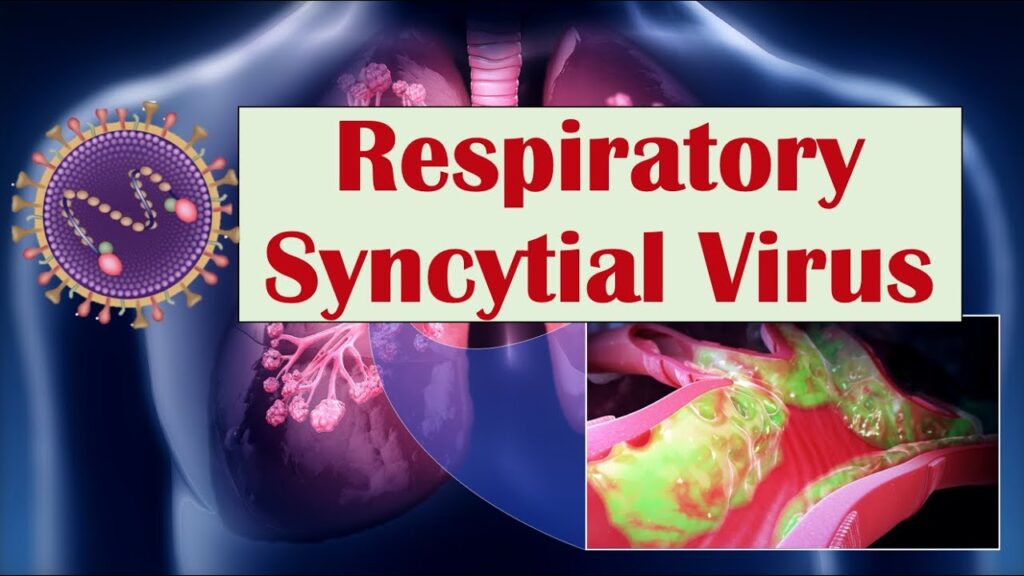Respiratory syncytial virus (RSV) is a major cause of lower respiratory tract infections globally, particularly in infants, older adults, and immunocompromised individuals. Among the most severe complications of RSV is RSV pneumonia, a viral lung infection marked by inflammation and fluid accumulation in the alveoli, leading to impaired gas exchange.
RSV pneumonia contributes to significant morbidity and mortality, especially in vulnerable populations. Therefore, preventive strategies are critical to reducing the global health burden associated with this condition.

High-Risk Populations for RSV Pneumonia
Effective prevention of RSV pneumonia requires the identification and protection of high-risk individuals. These groups face an increased likelihood of severe disease progression and hospitalization.
Primary High-Risk Groups:
- Infants under 6 months, particularly those born prematurely
- Children with congenital heart or chronic lung disease
- Adults aged 65 years and older
- Immunocompromised individuals
- Patients with neuromuscular disorders affecting lung function
Understanding Transmission and Infection Pathway
RSV is transmitted through respiratory droplets, direct contact with nasal secretions, or contact with contaminated surfaces. Once inhaled, the virus targets epithelial cells in the upper and lower respiratory tract, eventually invading the bronchioles and alveoli, where pneumonia may develop.
Preventive Strategies for RSV Pneumonia
1. Vaccination as a Primary Preventive Measure
Recent advancements have led to the development of effective RSV vaccines. These vaccines are now a cornerstone in RSV pneumonia prevention, particularly for high-risk groups.
Approved RSV Vaccines:
- Arexvy (GSK) – Approved for adults ≥60 years
- Abrysvo (Pfizer) – Approved for both adults ≥60 and for maternal use during weeks 32–36 of pregnancy to protect infants post-birth
Maternal Immunization:
Pregnant individuals vaccinated with Abrysvo can transfer protective antibodies to their infants, reducing the likelihood of RSV pneumonia during early infancy.
2. Monoclonal Antibody Prophylaxis
For infants at high risk who may not be eligible for vaccination, passive immunization with monoclonal antibodies is recommended.
Available Monoclonal Antibodies:
- Palivizumab – Monthly injections during RSV season for high-risk infants
- Nirsevimab – A newer, long-acting monoclonal antibody approved for broad infant use with a single seasonal dose
3. Infection Control and Hygiene Practices
Proper hygiene significantly reduces RSV transmission, especially in communal settings such as daycare centers, nursing homes, and hospitals.
Essential Practices:
- Frequent handwashing with soap and water
- Avoiding close contact with symptomatic individuals
- Regular disinfection of high-touch surfaces
- Use of face masks in crowded environments during RSV season
4. Breastfeeding and Nutritional Support
Breast milk contains maternal antibodies that offer passive protection against RSV and other pathogens. Exclusive breastfeeding for at least the first 6 months strengthens the infant’s immune response and lowers pneumonia risk.
5. Smoke-Free Environments
Exposure to tobacco smoke is a known risk factor for respiratory infections. Maintaining a smoke-free home environment enhances pulmonary defenses and reduces RSV severity.
Seasonal Awareness and Public Health Preparedness
RSV outbreaks follow seasonal trends, typically peaking in late fall through early spring in temperate climates. Proactive planning, such as timing maternal vaccinations and initiating prophylaxis for at-risk infants before RSV season, is crucial.
Public health agencies should coordinate with healthcare providers to implement RSV prevention campaigns, distribute vaccines and antibodies, and educate caregivers on risk reduction.
Early Detection and Intervention
While prevention is ideal, early recognition of RSV symptoms can mitigate progression to pneumonia. Parents and caregivers should be vigilant during RSV season for early signs such as:
- Persistent cough
- Wheezing or labored breathing
- Poor feeding
- Fever and lethargy
Prompt medical evaluation and supportive care can prevent escalation to pneumonia and reduce hospitalization rates.
Integrating RSV Prevention into Routine Care
Healthcare providers should include RSV pneumonia prevention in routine care for at-risk populations. This includes:
- Assessing eligibility for RSV immunization
- Educating families on RSV symptoms and prevention
- Scheduling prophylactic interventions prior to peak season
- Coordinating follow-up care for infants and elderly patients
Future Outlook for RSV Prevention
Continued research into vaccine development and immunoprophylaxis promises broader and more effective protection. Innovations under investigation include:
- Universal RSV vaccines targeting multiple age groups
- Extended half-life monoclonal antibodies
- Combination vaccines (e.g., RSV-influenza)
- Intranasal vaccines for mucosal immunity
These advancements will enhance our ability to prevent RSV pneumonia globally and reduce healthcare burdens.
Frequently Asked Questions:
1. Who should get the RSV vaccine?
Adults over 60 and pregnant individuals between 32 and 36 weeks of gestation should receive the RSV vaccine, based on current guidelines.
2. Can RSV pneumonia be prevented in infants?
Yes, through maternal vaccination, monoclonal antibodies (e.g., nirsevimab), breastfeeding, and minimizing exposure during RSV season.
3. What are the first signs of RSV pneumonia?
Early signs include fast breathing, wheezing, poor feeding, and increased respiratory effort.
4. Is RSV pneumonia contagious?
The virus that causes RSV pneumonia is highly contagious, but pneumonia itself is a complication that develops in vulnerable individuals.
5. Are there long-term effects of RSV pneumonia?
In some cases, RSV pneumonia may lead to chronic respiratory issues such as wheezing or asthma in later childhood.

